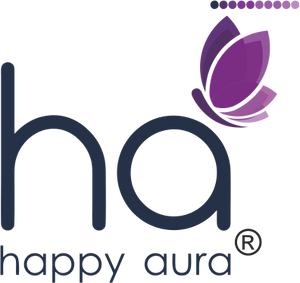

Starting in the world of essential oils is fascinating, but at the same time can be a little overwhelming. Don’t worry, we’ve got you covered. We have answered some of the most asked questions about essential oils, so you can start diffusing and blending them with confidence.
What are Essential Oils?
Essential oils are compounds extracted from different plant parts. They are so named because they contain the essence that is the fragrance and properties of the plants they are derived. In a way, they are a liquefied version of plants. These natural oils come from many parts of a botanical, from the leaves, stems, flowers to bark, roots, and fruit peels.How are Essential Oils extracted from the plants?
There are many extraction methods of essential oils. The oldest and most commonly used technique is steam distillation. The steam or “essence” of the plant is condensed to extract the oil from it. The oil obtained contains the aromatic, therapeutic, and medicinal qualities of the plant. Other methods used for the extraction of essential oils are hydro-distillation, cold pressing, CO2 extraction, and solvent extraction.
What is an Essential Oil blend?
An essential oil blend is a combination of two or more oils, mixed to acquire a new scent and give well-rounded benefits. For blending, essential oils are classified as, based on their aroma, floral, woody, earthy, herbaceous, minty, citrus, etc. The possibilities of creating essential oil blends are endless.
How do Essential Oils work?
The sense of smell is the only sense linked to the limbic lobe of our brain, which controls our emotions and hormones. When inhaled, the molecules of essential oil travel from olfactory nerves directly to this center of the brain. That’s why essential oils affect our mood and energy levels. Essential oils are also easily absorbed by our skin.
Are Essential Oils strong?
Essential oils are strong enough to work wonders. They are highly concentrated substances. They can be 50 to 70 percent more potent than the herb or plant. For instance, approximately three pounds of lavender flowers produce just 15 ml of lavender essential oil.
How long do Essential Oils last?
Most essential oils have a shelf life of 3 years if stored properly. Some oils, like patchouli and sandalwood, can last more than five years when stored properly. The shelf life depends on the type of oil and exposure to moisture, light, and heat.
How should Essential Oils be stored?
It is best to store essential oils in dark-coloured, glass bottles with simple, air-tight lids. It is preferred to use amber or cobalt blue coloured glass bottles over clear ones. Never store essential oils in a plastic bottle as they are corrosive. The bottle should be kept in a cold, dark place away from direct sunlight or heat.
What can damage the Essential Oils?
Essential oils can get damaged from heat, direct sunlight, oxygen, and even moisture. For avoiding such damages, essential oils should be kept in air-tight, dark-coloured glass bottles.
Should Essential Oils be used directly on the skin?
Even though 100% natural, essential oils are highly concentrated and can cause harm if used directly on the skin. Diluting the oil with a carrier agent is always recommended. You should do a patch test before using essential oils in skincare. And remember, less is more! Whether you are using them topically or aromatically, always add few drops first.
Are Essential Oils safe to ingest?
We do not recommend using essential oils internally, without proper consultation from a medical doctor or an experienced Aromatherapist. The reason for this is that undiluted and pure essential oils are highly potent, concentrated substances that can cause damage to vital organs when ingested. All HappyAura essential oils are labeled for external use only.
How to check the purity or authenticity of Essential Oil?
Essential oil is said to be pure if it has not been modified in any way or has any added chemicals. To reap the maximum benefits of using essential oils, the quality of the oil determines its effectiveness. Pure essential oils have the plant’s botanical name written as Citrus Limonum, instead of a term like the essential oil of lemon.
To check the purity of some essential oil at home, you can do a paper test. Put a drop of the oil on a paper and let it evaporate. A pure essential oil will not leave any stain. If the oil doesn’t stain, then you can be assured about its purity. However, some naturally coloured oils like Orange, Blue Tansy, and Patchouli will leave a stain.
How long does it take for Essential Oils to show effect?
The effect of using essential oils varies from person to person. It majorly depends on the method of using the oil, frequency of usage, concern, and also the health condition of the person. For instance, when inhaled through the nose, it takes 22 seconds for the molecules of essential oil to reach the brain. So you can see or feel the results almost instantly.
Are Essential Oils safe for everyone?
Essential oils are, generally, considered to be safe for use by everyone. However, it is necessary to take precautions when using it on children, and also on pregnant and breastfeeding women. Also, people with sensitive skin or those having specific allergies should consult a doctor or an experienced Aromatherapist before using essential oils.




